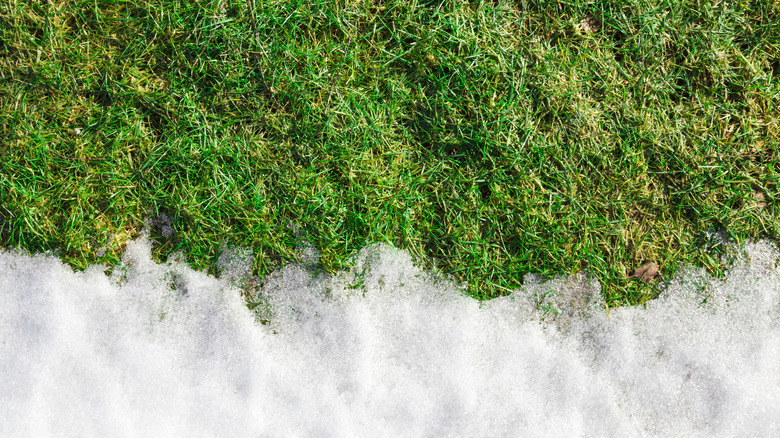Every spring, the crunchy brown lawn returns with a green vengeance, assuming it was properly cared for in the off-season. You might think a dormant lawn means your responsibilities have also gone dormant, but a little extra love in the cold months will go a long way when it’s time to grow again in the spring. It’s important to ensure you use the right fertilizer in the right part of the year because too much fertilizer in the winter can cause the grass to grow too much, resulting in new growth that is unable to handle cold weather. Use a low-nitrogen fertilizer with high potassium in early December and late February, and you’ll be guaranteed to have beautiful growth in the spring.
Nitrogen is responsible for leaf growth. Leaf growth is unnecessary in winter when plants are dormant, and the growth of tender leaves is what can lead to damaged grass. This is why choosing the right kind of fertilizer is so important.
When to fertilize your lawn

There are two types of grasses: cool season and warm season. Cool-season grasses, such as Kentucky bluegrass, fescues, bentgrass, and ryegrass, grow from fall to spring, while warm-season grasses, such as Bermuda grass, St. Augustine grass, centipede grass, and zoysia grass, grow from spring to fall. Both cool-season and warm-season grasses have different growth requirements that will affect how and when you should fertilize them. Since cool-season grasses grow when it’s cool, such as in the fall and spring, fertilizing them around these times is ideal.
On the other hand, warm-season grasses have their growth spurts during the summer and go dormant in the winter, so they shouldn’t be fertilized in the winter. However, if you overseed them with cool-season grass, meaning you plant cool-season grass with the warm-season to keep your yard green all year, then you can follow the guidelines for winter fertilization.
The fertilizer you should use in the winter
Fertilizer contains three main nutrients that are listed as NPK in fertilizers: nitrogen (N), phosphorous (P), and potassium (K). The NPK ratio is listed on fertilizer containers as three numbers. For cool-season grasses, a low-nitrogen fertilizer is recommended, like a 5-10-10. Low nitrogen won’t cause as many leaves to grow, while potassium will help the roots develop. Though the grass is dormant, it will slowly continue root growth, making a dose of potassium at the start of winter a good idea.
When spring rolls around, you can switch to a fertilizer with more nitrogen since the grass will soon start to grow rapidly as the weather begins to warm. The nitrogen will encourage leaf growth, which is responsible for making your lawn lush and green. This high-nitrogen fertilizer is also what you’ll use on warm-season grasses when the time comes to fertilize it. If you have an overseeded lawn with both kinds of grass, high nitrogen in February will help both types grow.